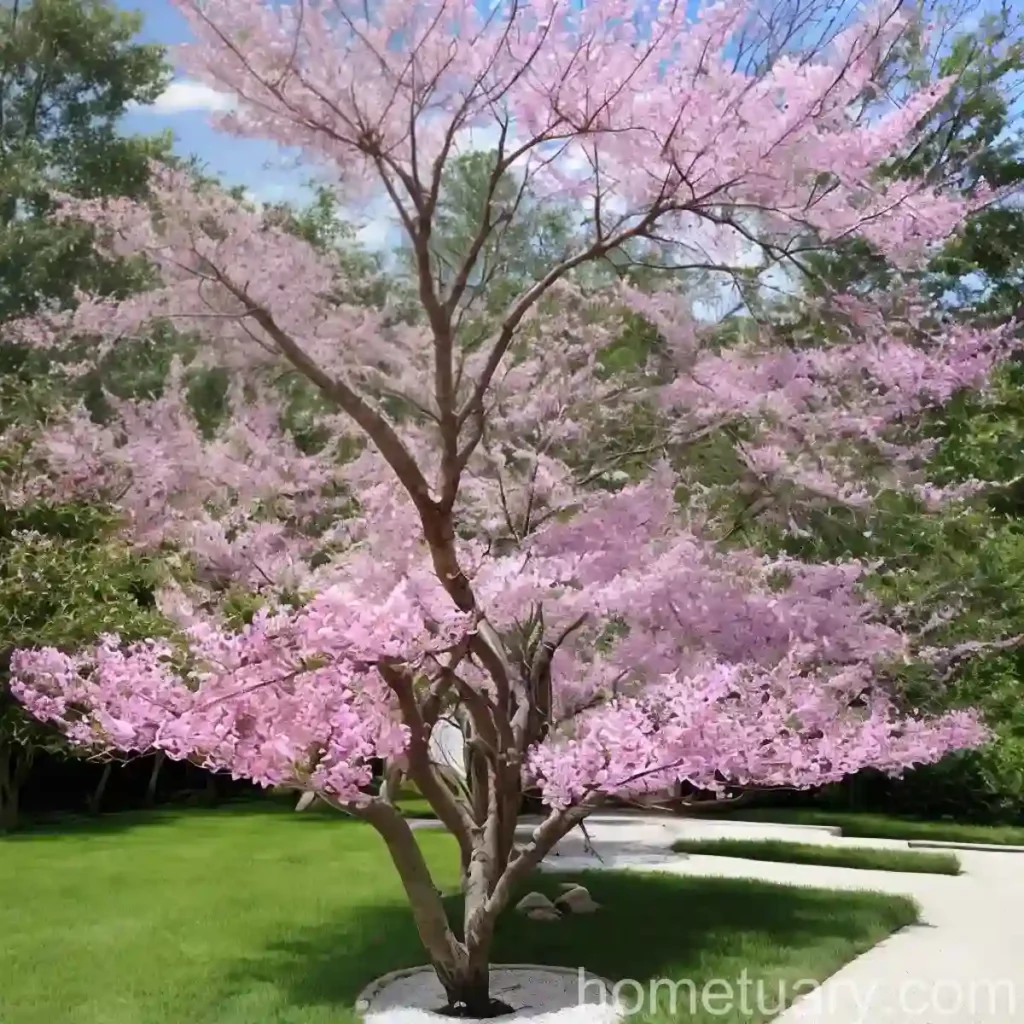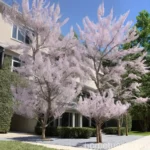Eastern Redbud (Cercis canadensis ‘Tennessee Pink’): A Beautiful Ornamental Tree
The eastern redbud, scientifically known as Cercis canadensis ‘Tennessee Pink’, is a stunning ornamental tree that belongs to the Fabaceae family. With its delicate pink flowers and unique heart-shaped leaves, it is a beloved addition to landscapes and gardens. In this comprehensive guide, we will delve into the various aspects of the eastern redbud, offering insights into its culture, uses, care requirements, and much more.
What is the Eastern Redbud (Cercis canadensis ‘Tennessee Pink’)?
The eastern redbud, also referred to as Tennessee Pink, is a deciduous tree native to eastern North America. It is known for its spectacular display of pink or magenta flowers that bloom in early spring, before the foliage emerges. The heart-shaped leaves add to its ornamental appeal, turning a rich green in the summer and transitioning to vibrant shades of yellow in the fall.
Key Takeaways
- Common Name: Eastern Redbud, Tennessee Pink
- Scientific Name: Cercis canadensis ‘Tennessee Pink’
- Family: Fabaceae
- Flower Color: Pink to magenta
- Foliage: Heart-shaped leaves, green in summer, yellow in fall
Now that we have an overview of this exquisite tree, let’s delve into the various aspects associated with its cultivation and care.
Culture
The eastern redbud thrives in a variety of environments, making it a versatile choice for landscaping and ornamental gardening. Here are some key considerations when it comes to the culture of this beautiful tree:
Uses
The eastern redbud serves multiple purposes in landscaping and horticulture:
- Ornamental Tree: Its stunning floral display and unique foliage make it a popular choice as an ornamental tree in gardens and urban landscapes.
- Wildlife Habitat: The tree provides nectar for pollinators and serves as a food source for various wildlife species.
- Aesthetic Appeal: It adds a burst of color to spring landscapes, complementing other flowering plants and shrubs.
Water
When it comes to watering, the eastern redbud prefers moist, well-drained soil. While it can tolerate short periods of drought once established, consistent watering is essential, especially during the early stages of growth and during dry spells.
Sunlight
This tree thrives in full sun to partial shade. Providing it with adequate sunlight is crucial for robust flowering and healthy foliage development.
Fertilizer
Applying a balanced, slow-release fertilizer in early spring can promote healthy growth and vibrant blooms. It is important to follow the recommended application rates to avoid over-fertilization, which can have adverse effects on the tree.
Soil
The eastern redbud adapts well to various soil types, including loamy, well-drained soils. It is essential to avoid waterlogged or compacted soils, as they can hinder root development and lead to stress on the tree.
Pruning
Pruning is an integral part of maintaining the health and aesthetic appeal of the eastern redbud. It is best to prune the tree during the dormant season to shape its canopy, remove dead or crossing branches, and encourage proper airflow within the tree.
Propagation
Propagation of the eastern redbud can be achieved through several methods, including seed propagation and hardwood cuttings. However, for cultivars such as ‘Tennessee Pink’, it is advisable to propagate through grafting or tissue culture to ensure the genetic characteristics are preserved.
Container Popularity
While the eastern redbud can be grown in containers, it is important to provide adequate space for root development. Large containers with good drainage are essential for the tree to thrive in a containerized environment.
Now that we have an understanding of the cultural requirements and uses of the eastern redbud, let’s explore its popularity and common diseases and pests.
Popularity
The eastern redbud, especially cultivars such as ‘Tennessee Pink’, has gained widespread popularity among gardeners and landscapers for several reasons:
- Aesthetic Appeal: The stunning pink flowers and heart-shaped foliage make it an attractive choice for ornamental landscapes.
- Seasonal Interest: Its early spring blooms add a burst of color to gardens and urban spaces, marking the beginning of the growing season with a captivating display.
- Adaptability: The tree’s ability to thrive in diverse soil types and environmental conditions makes it a versatile option for a range of gardening settings.
Common Diseases
While the eastern redbud is relatively resilient to many diseases, there are certain issues that can impact its health and vitality. Being aware of these common diseases and their symptoms can help in early detection and management.
Disease Diagnosis
Some of the common diseases that may affect the eastern redbud include:
- Verticillium Wilt: This fungal disease can cause wilting, yellowing of leaves, and overall decline in the tree’s health. It is important to monitor the tree for signs of wilt and take preventive measures such as proper irrigation practices and soil health management.
- Anthracnose: Symptoms of anthracnose include brown spots on leaves, twig dieback, and leaf blight. Fungal infections can lead to defoliation and affect the tree’s overall vigor. Proper sanitation and fungicidal treatments can help manage anthracnose.
Common Pests
In addition to diseases, certain pests can pose a threat to the eastern redbud. Vigilance and early intervention are crucial in managing pest infestations and preserving the health of the tree.
Botanist’s Tips
- Prune Wisely: Proper pruning practices, such as removing dead or diseased branches and shaping the canopy, can contribute to the tree’s overall health and aesthetics.
- Monitor Soil Moisture: Maintaining consistent soil moisture without waterlogging is essential for the eastern redbud’s health, especially during the establishment phase.
- Fertilize Mindfully: Avoid over-fertilization, as it can lead to excessive foliage growth at the expense of floral display. Follow the recommended fertilization guidelines to promote balanced growth.
Fun Facts
- The eastern redbud, particularly the ‘Tennessee Pink’ cultivar, is considered the state tree of Tennessee, adding to its cultural and botanical significance.
- The vibrant pink flowers of the eastern redbud are not only visually striking but also attract pollinators such as bees and butterflies, contributing to ecosystem biodiversity.
With its captivating blooms and ornamental value, the eastern redbud continues to be a sought-after choice for gardens, urban landscapes, and naturalized areas.
Links to External Resources
For further information on the eastern redbud and its cultivation, here are some valuable external resources:
- University of Tennessee Institute of Agriculture – Native Trees of Tennessee
- Cercis canadensis ‘Tennessee Pink’ – Missouri Botanical Garden
- Ornamental Trees for Landscaping – The Morton Arboretum
These resources provide in-depth insights into native trees, specific cultivars, and ornamental tree selections, offering a wealth of knowledge for enthusiasts and horticulturists alike.
In conclusion, the eastern redbud (Cercis canadensis ‘Tennessee Pink’) stands as a testament to the beauty of native trees and the valuable contributions they make to our landscapes and ecosystems. Its exquisite blooms, adaptability, and cultural significance continue to make it a cherished addition to gardens and natural spaces, captivating all who encounter its springtime splendor. Whether adorning urban streetscapes or gracing serene garden retreats, the eastern redbud remains a timeless symbol of natural grace and botanical allure.















